Ab anbar | A masterpiece of ancient water reservoir architecture
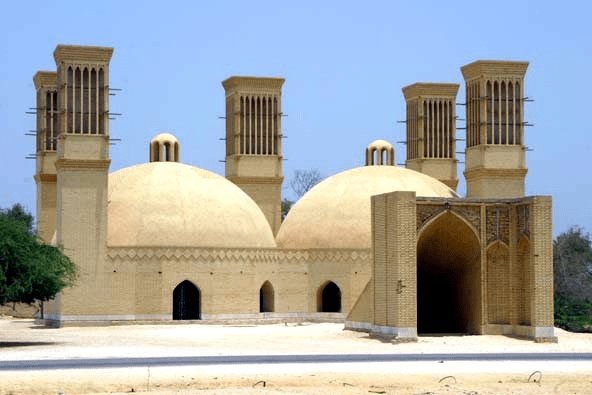
Ab anbar is a symbol of architecture of areas with arid climate
Water was one of the holy elements in ancient Iran. According to ancient beliefs and Iran mythology water was created in the second stage of six gahambar (primordial creation) stages.
Ancient Persians believed that water was created in the middle of Tir month (June _ July) by Tishtrya (the goddess of rain). So every year they would celebrate and praise the goddess of rain on Tir 13th which was called “Tirgan”.

Tishtrya the goddess of rain and the symbol of fertility in ancient Iran.
The arid climate of Iranian Plateau and the shortage of water resources in central plains made the inhabitants to consider building a proper water reservoir.
In the desert lands ab anbar was the centre of many civilizations and in many regions it was one of the biggest and most eye catching pieces of architecture.
Because of the arid climate of a part of Iran and the decrease of amount of rain in half of the year, and also since most rivers and other water resources are seasonal; people have always been taking actions to reserve more water. Some examples of the solutions used are ab anbar, Qanat and dams.
This water reservoir has been mentioned with different names like pond, pool, cistern, reservoir or etc in many ancient texts and travelogues. It’s a huge covered area which was used for reserving the water from rain, qanat or seasonal rivers. It was often built in the cellar so that inhabitants use that water during the dry months.

Basilica cistern in Turkey was built in the 6th century under the command of Justinian the Eastern Roman (Byzantine) emperor.
This water reservoir (ab anbar in Iran) is called by different names in other countries, for instance: Sardabe (in Turkmenistan), Masna (in Egypt), Khazan (in Palestine) and Howz (in Herat).
The building techniques used for ab anbar were so sophisticated that the architects had to have great expertise in many subjects including: the pressure of water on the ground of ab anbar, coating the inner walls, air ventilation, water filtration and etc.
The outer ornamental design perfectly indicates the taste and spirit of the inhabitants of that area.
The history of Ab Anbar
The oldest ab anbar in the world was built in 2150 BC in Ur city which is located near Basrah. It was built on the city ziggurat by the king command.
Another famous ancient ab anbar, is the water reservoir of Constantinople which was built in 6th century BC and by the Eastern Roman emperor’s command. This building has 2 cisterns and 1001 columns, thus it’s known as the 1001 column cistern.
Ab anbar has a long history in Iran. According to the findings the oldest signs of using some facilities to reserve and use the water currents in Iran were in Elam era.
The world’s oldest refinery was built in the city of Duravantash next to the Choghaznabil ziggurat (near the present-day city of Shush) and in the first half of the millennium BC.
There are some reservoirs left in the southern regions and islands of the Persian Gulf from the Achaemenid and Sassanid eras that have a special credit in this regard.
According to some researchers and archaeologists, the knowledge of the construction of cylindrical and columnar reservoirs was brought to Iran from the Mediterranean region by Roman captives during the Sassanid era.
During the Islamic era, the construction of water reservoirs became a common element in the lives of Muslims in or near mosques. With the expansion of agriculture and trade, the construction of water reservoirs in the villages and on the caravan route flourished.
One of the oldest water reservoirs in Iran is the water reservoir of Qala-Istkhar Fars, which was built in the 4th century AH and was able to supply drinking water to more than a thousand local residents for a year.

In the northwest of Marvdasht plain, there is a separate and isolated mountain, which is known as the broken castles, Ashkanan and Istakhr. There is a large pool at the top of Istakhr Castle, which archaeologists believe is one of the oldest water reservoirs in Iran.
Types of Ab Anbar
Ab anabars are divided into two categories in general.
Plain Ab Anbar
They were usually built in the plains and outside the cities and villages. They had a very simple architecture and were more like a large, indoor pool.
There is usually a staircase on one side of the pond that runs to the end of the tank to allow people to take water from the tank even when the water level is low.
In fact, these reservoirs had only one pool in a hollow area that contained rainwater or seasonal streams. This type can be seen in some eastern regions of Khorasan, such as Taybad.
Urban ab anbar
These reservoirs had a more complex architecture and usually had a pool, staircase, access point (faucets) and windcatcher.
Reservoirs of this type are divided into two categories.
-Public reservoirs, which included a variety of vicinity, rural, and caravanserai reservoirs.
-Private reservoirs which were built inside the houses.
Public reservoirs were large buildings that could hold large quantities of drinking water needed for the inhabitants for several months. These water reservoirs were generally built by kings, rulers, or philanthropists.

Moradi ab anbar in Rafsanjan was built during Qajar era.
Urban water reservoirs were usually built next to important urban public places such as schools, bazaars, mosques, and so on. Among the most famous reservoirs, we can mention the ab anbar in Seyed Ismail Square in Tehran, Hakim ab anbar in Qazvin, etc.Rural ab anbar usually had simpler materials and architecture, and their storage tank designs were cylindrical.

In the construction of the rural ab anbar native materials were often used.
In castles and caravanserais, reservoirs were usually built in the form of indoor pools, with small, deep reservoirs. The arches of these reservoirs are flat, which in most cases have been used to place windcatchers.

Some of the castle’s reservoirs are combined with the castle’s building in a way that collects rainwater from the roof of the castle and the courtyard.
This type of reservoir has cylindrical tanks that in most cases are covered by dome.

Some of the water reservoirs had pergolas along the way to rest and pray.
Private reservoirs were built in houses or private places. These types of reservoirs include hollow, rock-hewn, cruciform, and elongated.
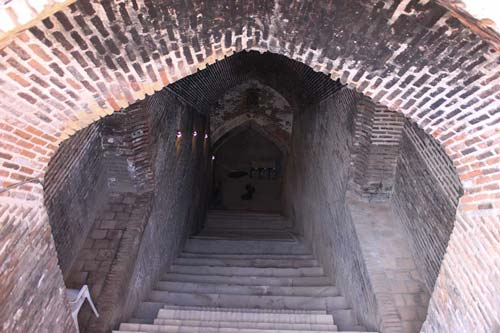
Private reservoirs were usually built in houses and under buildings or under courtyards.
Ab anbar architecture and construction
The architecture and design of ab anbar in different parts of Iran have been influenced by local architecture. Depending on their large or small size, the ab anbar storage tanks were built in two ways: columnar and without column with square, rectangular, octagonal and circular sections.
For example, in Qazvin, most reservoirs have square or rectangular tanks with tall domes. In Khorasan, water reservoirs are usually stepped. In cities such as Semnan and Garmsar ab anbar tanks are designed in circular shapes and lack special decorations.
Mountain Ab anbars
Mountain ab anbars have reservoirs that are manually built in the middle of mountains and boulders, and their roofs are covered with multiple arches. Sometimes the roof of the reservoir was consisted of natural stone, part of which was cut by hand and connected to each other, like the Damghan Gardkuh reservoir.
The roofs in mountainous areas, especially in temperate and forested areas, were flat and covered with wood and thatch. The tank of this type of ab anbar is in the form of a cube or a rectangular cube in terms of covering their roof, such as the ab anbar of Abyaneh village.
Catchment
There is another type of ab anbar that is used on the southern coast of the country and is also called pond or catchment. The tanks of this kind of ab anbar are located in the ground and their upper chamber is not enclosed. Residents go directly into it through openings and take water. The water in this type of reservoir is usually supplied by rainwater. As an example, Qavam Stone Water Reservoir on Kish Island can be mentioned.
Public ab anbars were mostly covered by arches or domes. For large ab anbars, they usually used hemispherical or oval or conical coatings. This method has been used to build the arch of public ab anbars for a long time.
Sometimes the openings of the reservoirs were so large that it was impossible to build the arch and the dome, like Kal ab anbar (pond) in Gerash Lar.

Kal ab anbar in Gerash, Fars, is one of the largest ab anbars in Iran, which was built about 300 years ago during the Qajar era.
Materials used in building Ab Anbar
Materials such as stone, lime and mortar were commonly used to make ab anbar. Depending on the climate and climatic conditions of the area, as well as the location of the ab anbar building, it is possible to use other materials such as mud straw or dried plants.
Different parts of Ab anbar
Reservoir, cistern or tank
The most important part of the ab anbar was the water storage. They were located in the ground and were circular or rectangular with a roof or dome. It is possible to access the water in the tanks through stairs or faucets.
The tanks were usually large and sometimes up to 12 meters in diameter. During the rainy and cold seasons, when there was less need for water for the agricultural and livestock sectors, the ab anbar reservoir was usually refilled.
The water required for the reservoirs was supplied from seasonal streams or through a range of existing qantas (canals).
In order to purify and use the water entering the reservoir, several large pools were built near the reservoir, into which water was purified and became usable by passing sand and stone debris.
Before water enters the tank, the tank must be cleaned of dirt, sludge and mud. Human resources were usually used to clean the tanks, which was very difficult and time consuming and sometimes took several days.

Ab anbar storage tanks were built in a variety of cylindrical, quadrangular and composite types.
The tanks had openings and entrances in the lower part through which water flowed into the tank. Depending on the volume of the reservoir, the refilling process would continue for up to a week.
Windcatchers were used to keep the air flowing in the reservoirs to prevent further spoilage of the water. Also some factors were used to maintain the quality of the water inside the reservoir, such as:
. Combination of salt and lime to prevent rot
. Small fish to kill bacteria and insects
. Coal to remove odors
. Clay for descaling
Gradually, as the water level dropped and the summer season ended and the water was drained, the top layer approached the bottom of the reservoir to such an extent that water was no longer allowed to drain from the reservoir. At this time, the ab anbar was cleaned and prepared for being refilled
Rachine or stairs
Stairs were used to reach the water intake. Depending on the size of the reservoir, these stairs were two or three meters wide and reached a height of 50 centimeters. They usually had a few turns that were a place to rest.
In some areas, due to the coolness of the water storage space between the steps of the staircase, there is a place such as a coffee shop or a syrup bar.
Ab anbars usually had different entrances in different places to make them easier to access. Sometimes, depending on the type of consumer, different entrances were used, such as Muslim entrance and non-Muslim entrance.
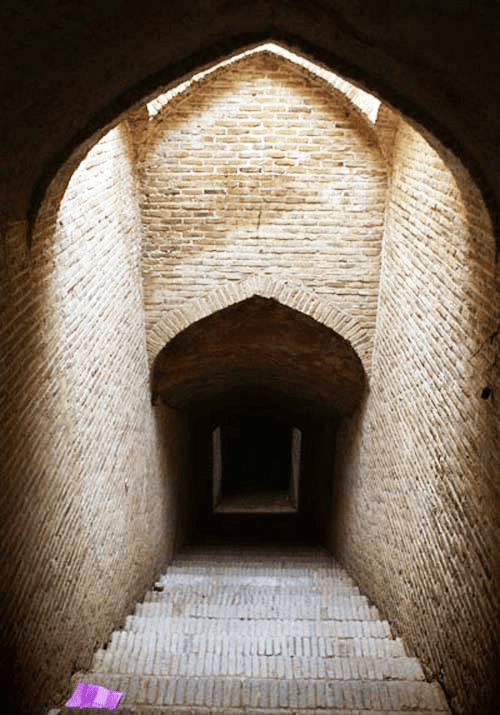
Rostam Giv ab anbar has two rows of stairs for Zoroastrians and Muslims.
Access point (pashir)
The location where you could access the water was called pashir, which is usually one step higher than the bottom of the tank. This part has an octagonal or semi-tetragonal shape and several water faucets and a relaxing platform are located in the water.

The location where you could access the water was called pashir.
Entrance
The entrance to the reservoir was a staircase leading to the water intake. The entrance was usually decorated with bricks and tiles and had an inscription with the name of the builder and a verse of a poem or a verse from the Quran engraved on it.

Entrance of reservoirs were usually decorated with indigenous and local decorative elements.
Windcatcher or Khishkhan
A windcatcher was used to cool the water in ab anbar. Depending on the location of the reservoir and the prevailing wind currents in the area, a variety of one-sided , two-sided , three-sided , four-sided or more windcatchers were used. The number of windcatchers in the ab anbar varies and sometimes reaches up to eight windcatchers.
Different types of storage tanks in ab anbars
Cylindrical
In this example, water pressure is the same at all levels. The walls are layered on top of each other and have no gaps. One of the advantages of this type of tank is the lack of corners and angles, which has a great impact on maintaining the quality and hygiene of water.
Cube
These types of tanks have a quadrangular shape with small openings and usually an arch is used to cover them.
Octagon
Due to the difficulty of maintaining such tanks, as well as the difficulty of building roofs on them, they are rarely seen.
Compound
They are a combination of cylindrical and quadrangular tanks. A cylindrical tank is placed in the center and four quadrilateral tanks are placed around it.
Different roofs of Ab Anbar
Dome
It was used for ab anbars that had large reservoir openings and they had cylindrical tanks
Conical
It is not much different from a domed roof, only in cases where the diameter of the tank is too large, the construction of a conical roof would replace the domed roof.
A curved arch
It is used in water reservoirs that have rectangular tanks. It is usually one of the easiest types of roofs in architecture.
Clanbow
It’s used in a variety of columnar ab anbars. This type of roof is very durable and can be built quickly.
Flat
It is mostly found in private reservoirs.
Famous ab anbars in Iran
Among the most famous water reservoirs in Iran, the following can be mentioned:
Kal pond in Gerash in Fars

Kal ab anbar was built and dedicated by Haj Assadollah Gerashi, known as Bigler Beigi.
Sardar Bozorg ab anbar in Qazvin

Sardar Bozorg ab anbar of Qazvin is one of the single domed ab anbars that belongs to the period of Fath Ali Shah Qajar.
Darya Dowlat kong in Hormozgan

This ab anbar, which is called Darya Dowlat pond, is located in the city of Band-e-Lengeh and in the Kong district.
Safiabad ab anbar (North Khorasan)

Safiabad ab anbar of Esfarayen city has been built in the square of the Jame mosque of this city.
Dahan Shir ab anbar in Fars
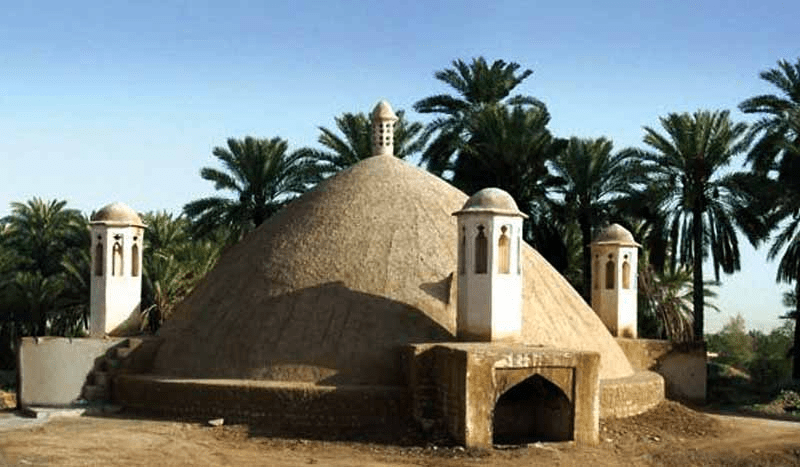
This ab anbar is located in Larestan city and in the east of this city’s bazaar.
Rostam Giv ab anbar in Yazd

Rostam Giv ab anbar in Yazd belongs to the Qajar period and has a turnip-like dome.
Shesh badgir ab anbar in Yazd

It is located in the shesh badgir (six windcatchers) neighborhood of Yazd city.
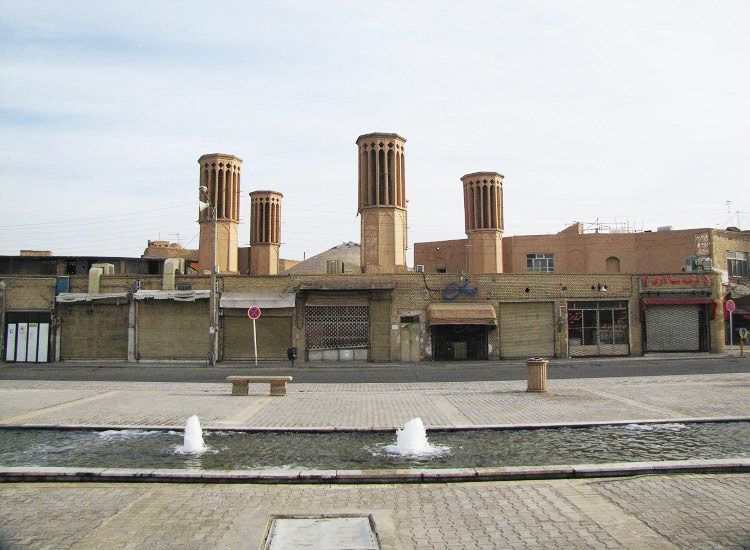
The water reservoir of the Amirchakhmaq complex in Yazd, which is part of the water museum in this city, was built along with the Haji Ghanbar bazaar during the time of Amir Chakhmaq and by the order of Nizamuddin Haji Ghanbar Jahanshahi.
To read this article in Persian Language Click here .
* Written by Marjan Ghanavati and Translated by Nafiseh Asadollahi.
.












Leave a Reply
Want to join the discussion?Feel free to contribute!